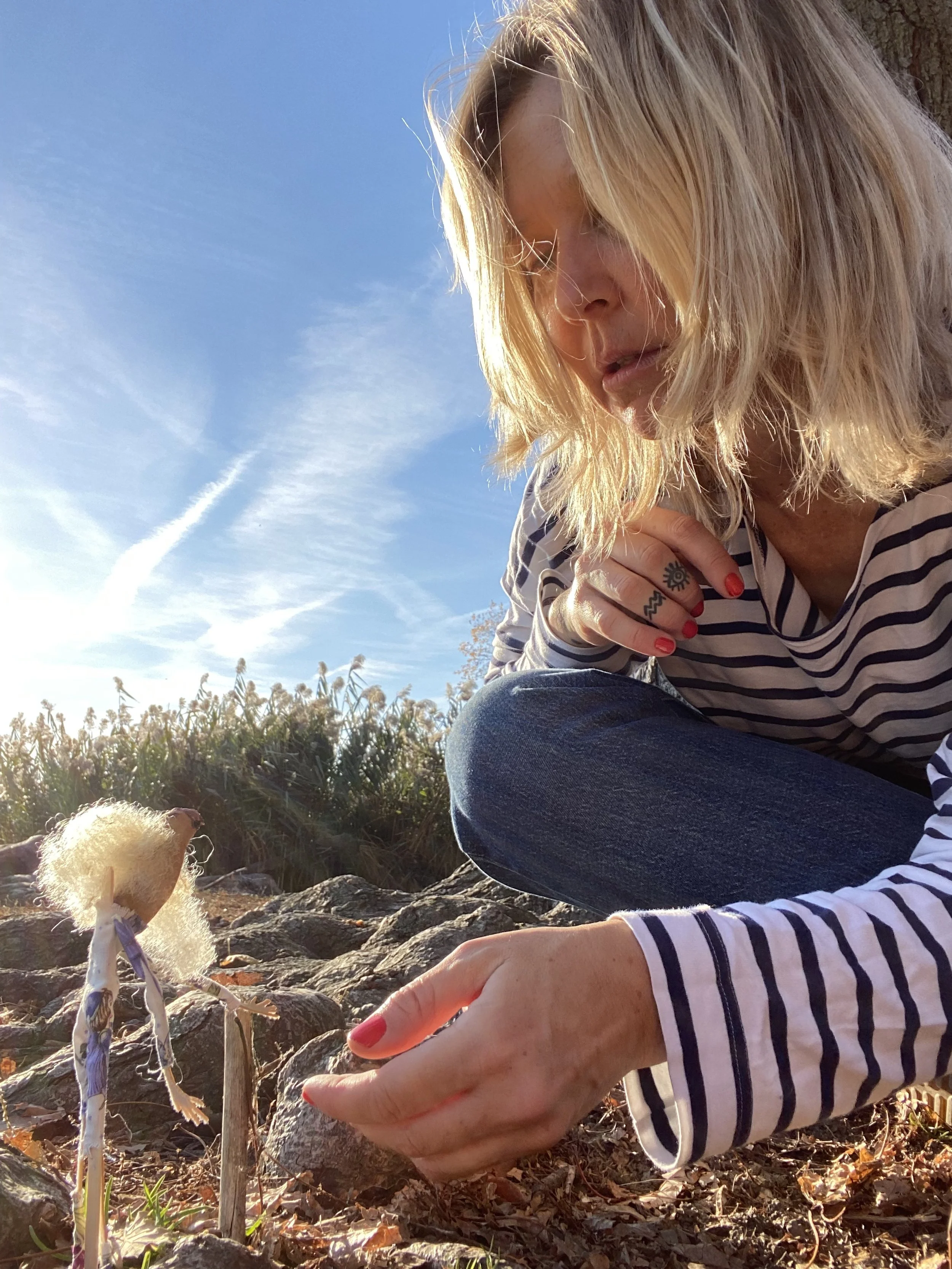This photo reminds me to find a new balayage place in NL
I am the Margaret Mead of fairies. I am educated as a cultural anthropologist and librarian by trade, with a short career in print journalism as the razzle dazzle.
My upcoming research project delves into the deep and evolving connections between people and the land in the Subarctic and Arctic regions, blending folklore, environmental humanities, and visual arts. Over the course of 2025, I will create daily fibre-based, 3D miniature folk—small, intricately crafted beings that I have referred to as “fairies” for lack of a better term. These guardians will be carefully placed and photographed within the diverse landscapes of Labrador, NL.
Strict self-imposed rules govern the creation of each miniature folk, reflecting a disciplined artistic practice. The work draws from a world parallel to our own—one where humans have never existed, but these fairies have thrived alongside the mammalian kingdom. In this universe, the miniature folk inhabit a solitary existence, akin to the precise loneliness every human has felt: surrounded by life, yet eternally alone. This aspect is emphasized by my choice to photograph them in isolation, with no humans present in the images or mentioned in their stories. These solitary figures symbolize a deeper connection to the natural world, free from human interference.
The project is more than an artistic endeavor; it’s an exploration of the stories and communities that form around these guardians. By engaging with local communities, I aim to allow for a reinterpretration of traditional Labrador folklore, especially in the face of climate change and cultural shifts. The absence of humans in the imagery creates a poignant reflection on what the world might look like without us, further enhancing the sense of otherworldliness and timelessness.
Through this work, I aspire to contribute to the fields of folklore, environmental humanities, and visual arts. My goal is to offer new insights into how art can mediate our relationship with the land, and how folklore can evolve to reflect contemporary environmental and social challenges.
